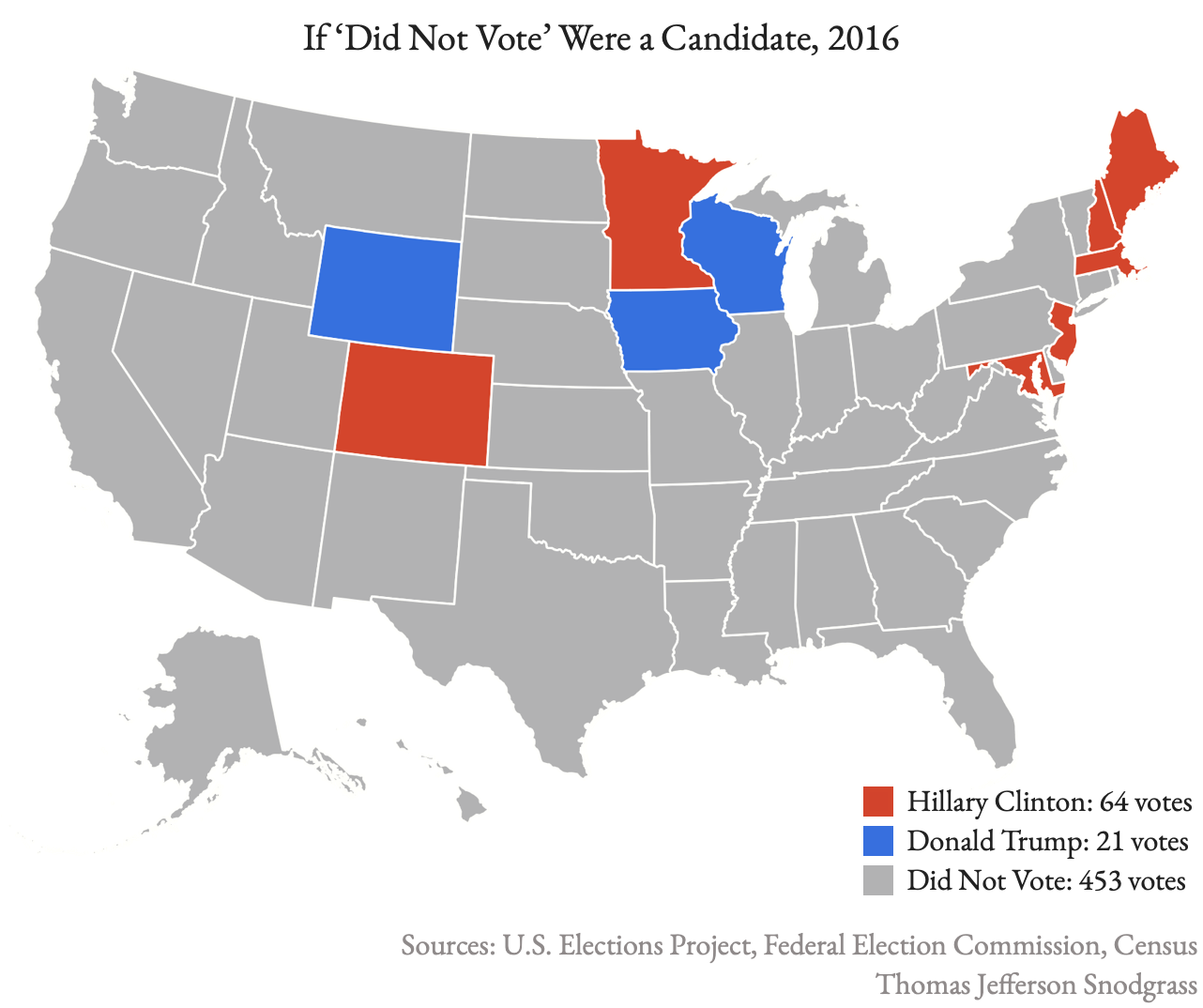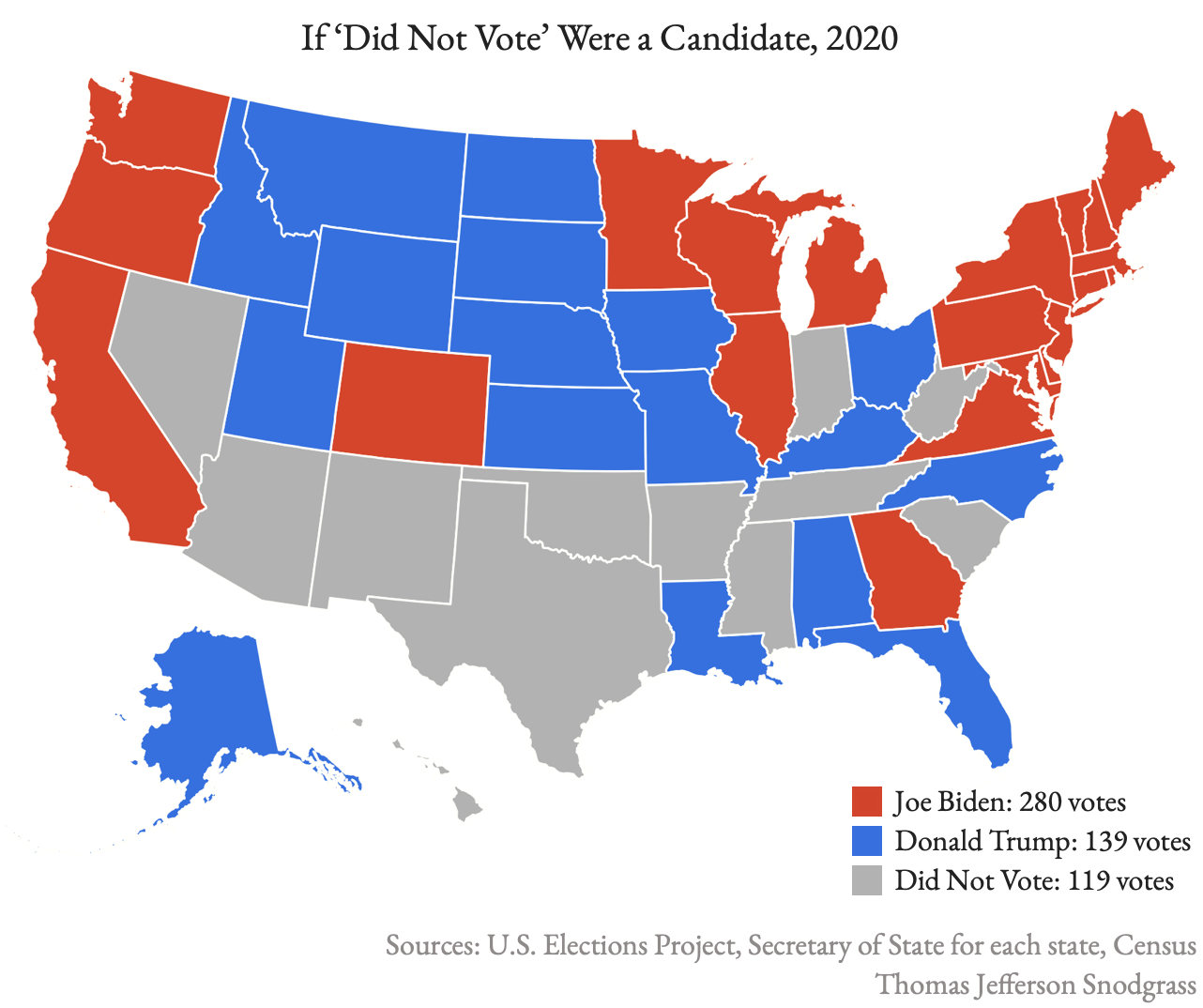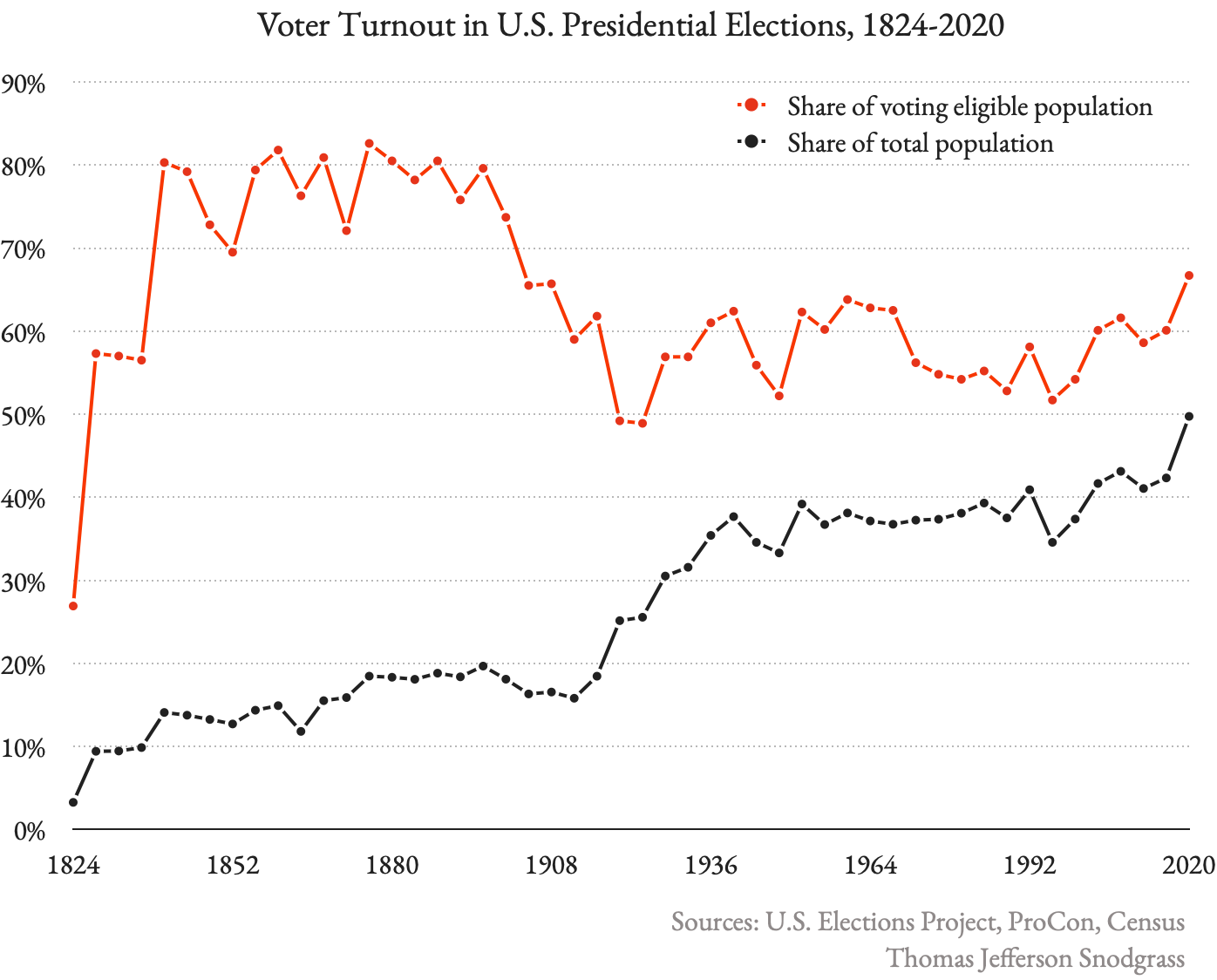If 'Did Not Vote' Were a Candidate
The explanations that follow in the wake of an election always fascinate me. After 2016, we heard a great deal about forgotten workers, political resentment, and American Enragés, but the outcome could have been altered with a few percentage points shifted here and there, and the narrative that followed would have changed radically, not commensurately. Nearly all the sentiments and casual forces going into the election could have been exactly the same, and yet we’d be telling each other a very different story about 2016.
One of the stories coming out of the 2020 election is the record turnout—the highest percentage of eligible voters since 1900—likely resulting from some combination of expanded mail-in voting, anger at the incumbent president, and people having nothing better to do while shut in by a pandemic.
This can be seen most starkly if we tally electoral votes as if Did Not Vote—representing the eligible voters who for one reason or another abstained—were a candidate. Think of it as a kind of no confidence vote. The maps look quite different between 2016 and 2020.Note that Maine and Nebraska allocate some votes by congressional district. These aren’t depicted on the map, but are part of the vote tallies. And most recent elections look like the former, with Did Not Vote carrying most states.


Public participation is typically considered a key marker, if not the marker, of civic health in a liberal democracy. If we look at election turnout over time, both as a percentage of eligible voters and as a percentage of the total population, we might conclude that we’re at a high watermark for civic participation, and that the country is on surer footing than it’s ever been.

The franchise has expanded. Political engagement is up. We can push the trend even further with online voting, following countries like Switzerland and Estonia, and with policies like declaring Election Day a national holiday. But if our civic life isn’t healthy and robust, what’s missing? And what is it that voter turnout actually measures?
We’re told that rising tribalism and political violence are a threat to democracy—especially with a composite nationality such as ours—but in some sense, in a time of expanded powers, heightened stakes, and ever-widening political concerns, they are democracy. If we wish to measure civic health in such times, voter turnout may mislead or portend. One must wonder if it’s not our democracy that’s at risk, but our liberalism.